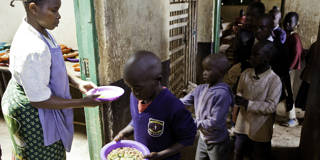Policymakers and global aid organizations tend to draw an artificial boundary between a child’s education and overall well-being. But reducing learning poverty requires addressing the complex barriers – like inadequate nutrition – that prevent children in poor countries from realizing their academic potential.
LONDON – There is growing concern that children in developing countries are not learning enough in school. Even before pandemic-related school closures, 57% of ten-year-olds in low- and middle-income countries were unable to read and understand a simple text – the definition of “learning poverty.” The COVID-19 crisis has only exacerbated the situation, leading large donors and global institutions to launch a program aimed at improving foundational skills.

LONDON – There is growing concern that children in developing countries are not learning enough in school. Even before pandemic-related school closures, 57% of ten-year-olds in low- and middle-income countries were unable to read and understand a simple text – the definition of “learning poverty.” The COVID-19 crisis has only exacerbated the situation, leading large donors and global institutions to launch a program aimed at improving foundational skills.